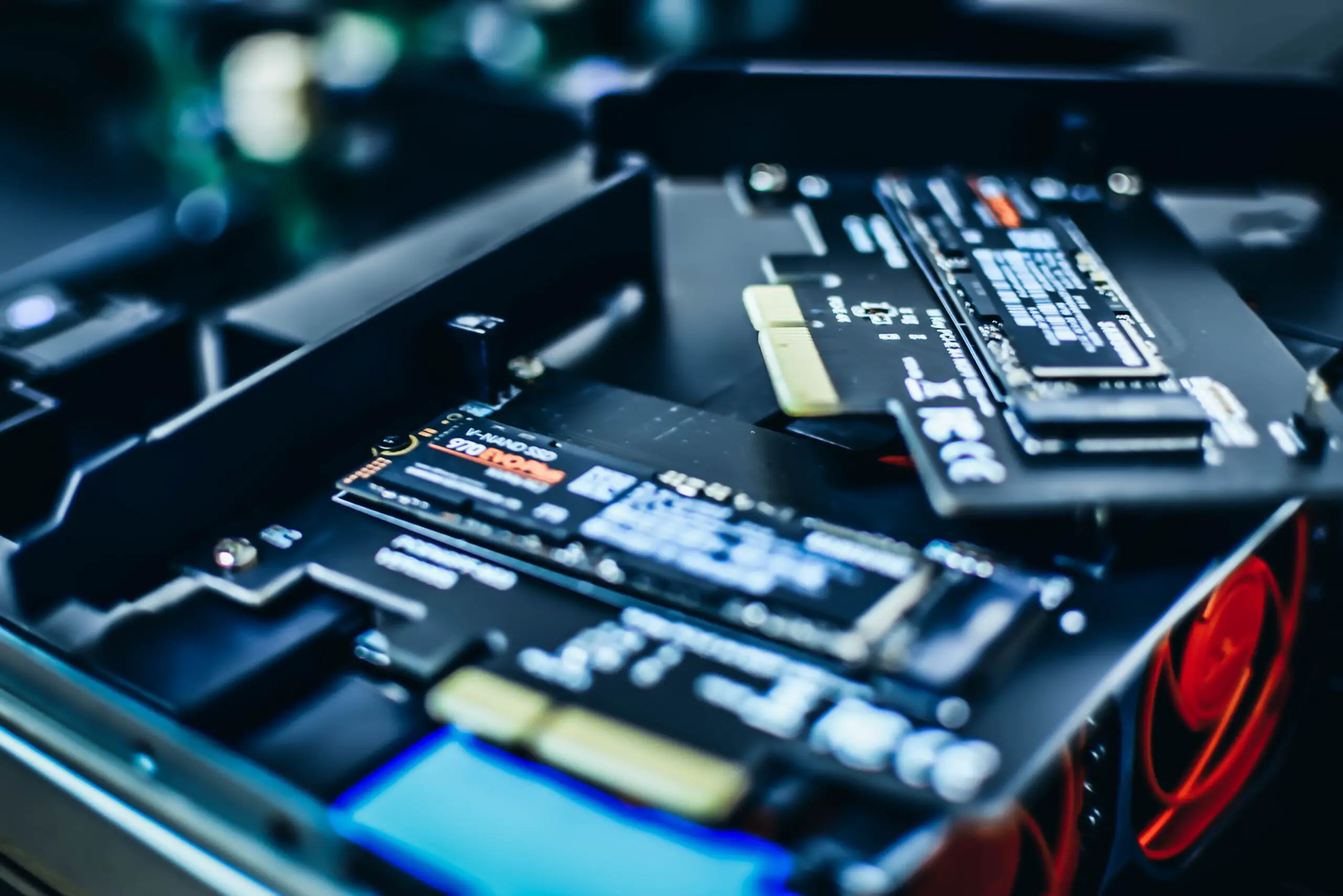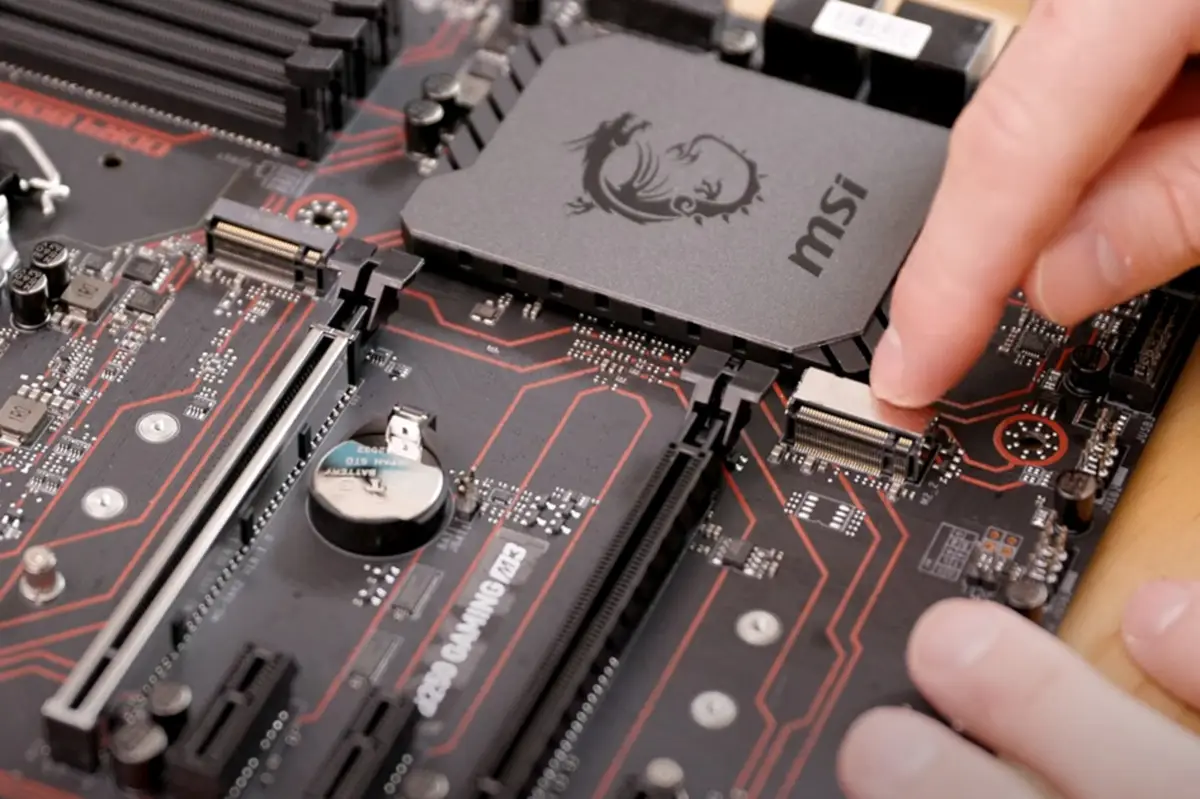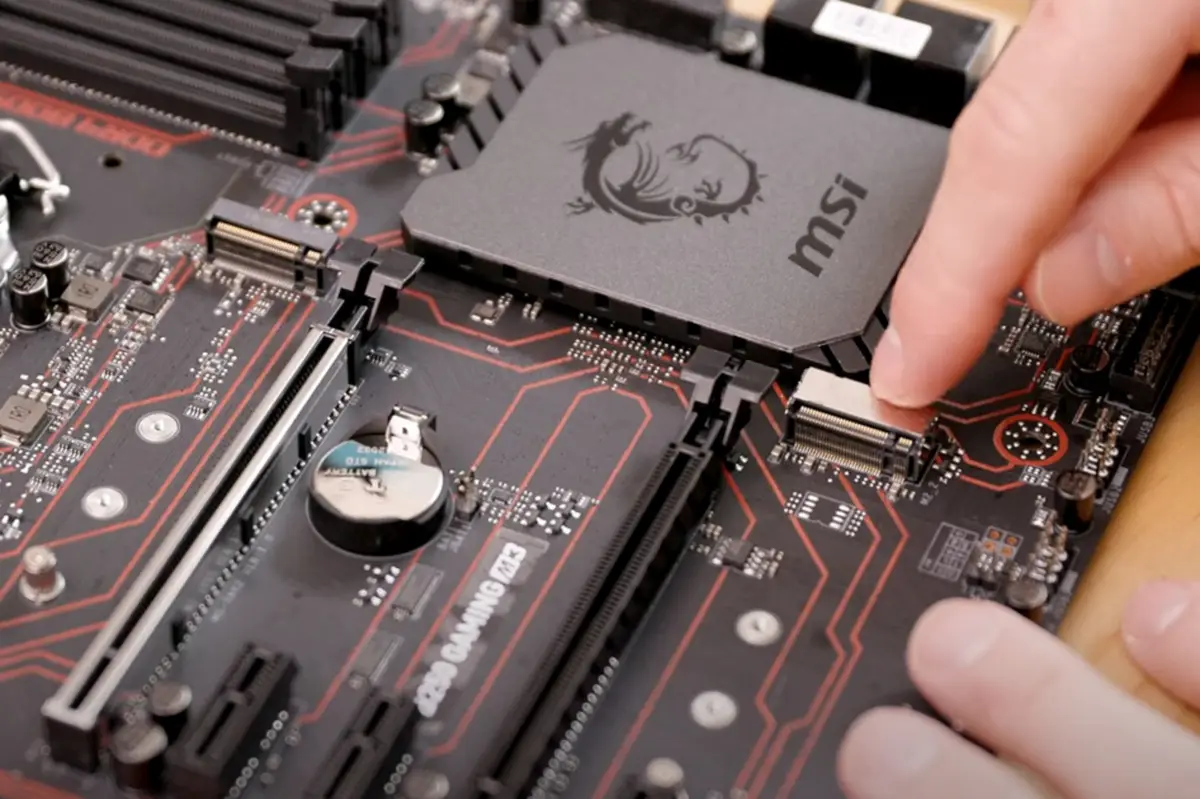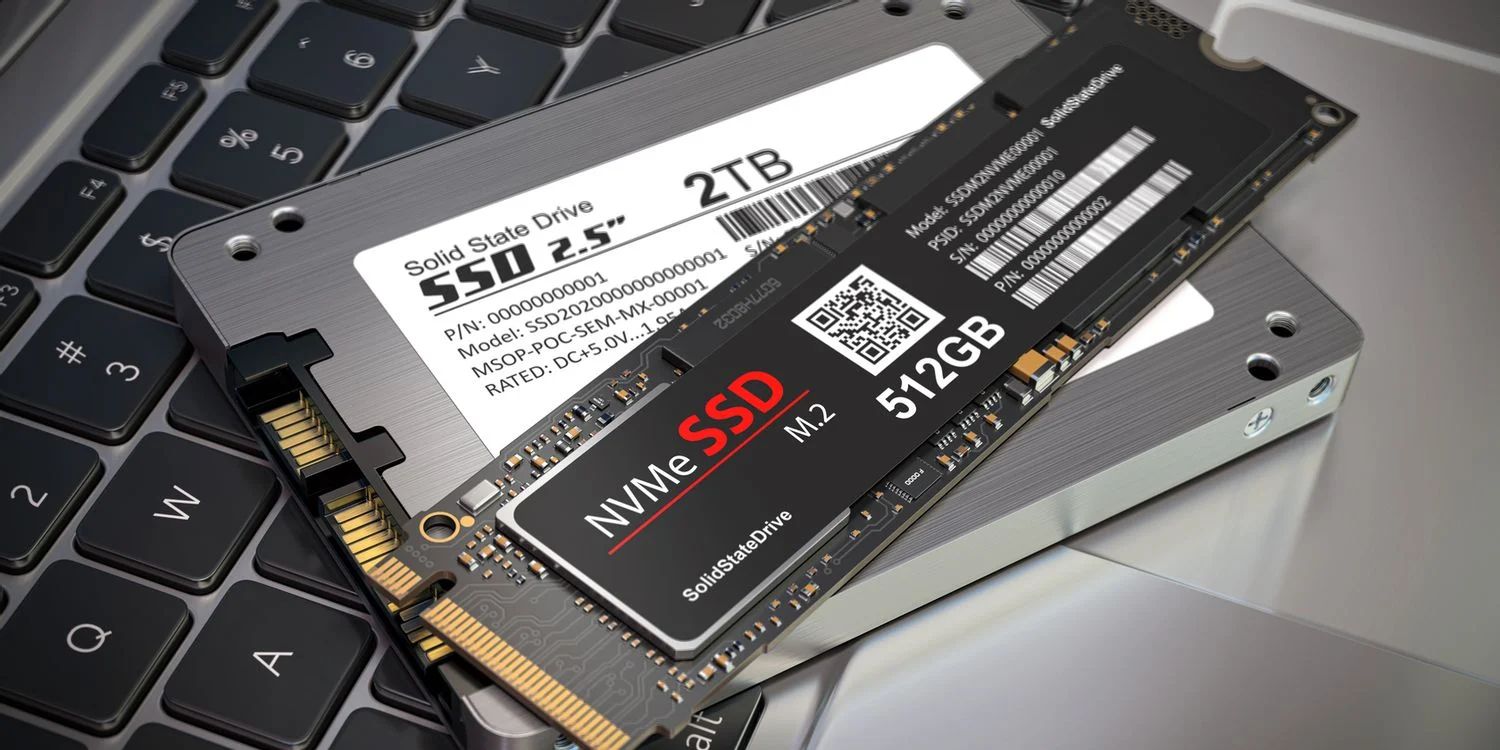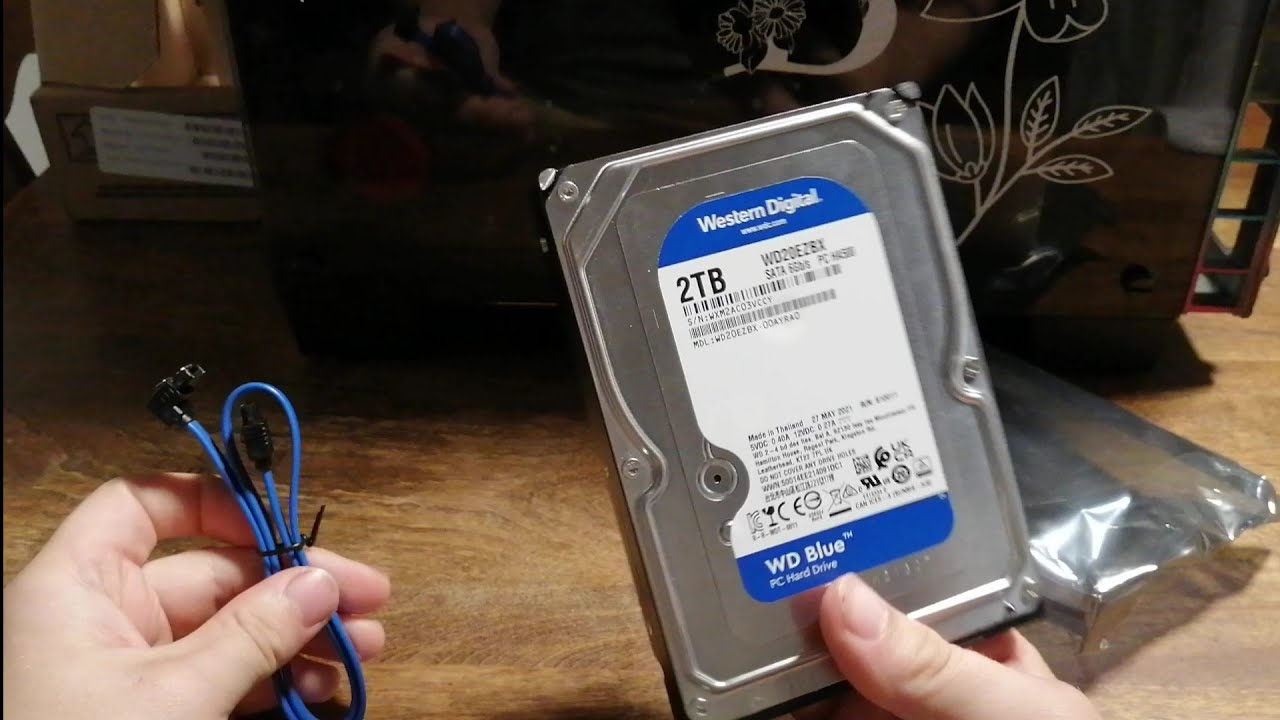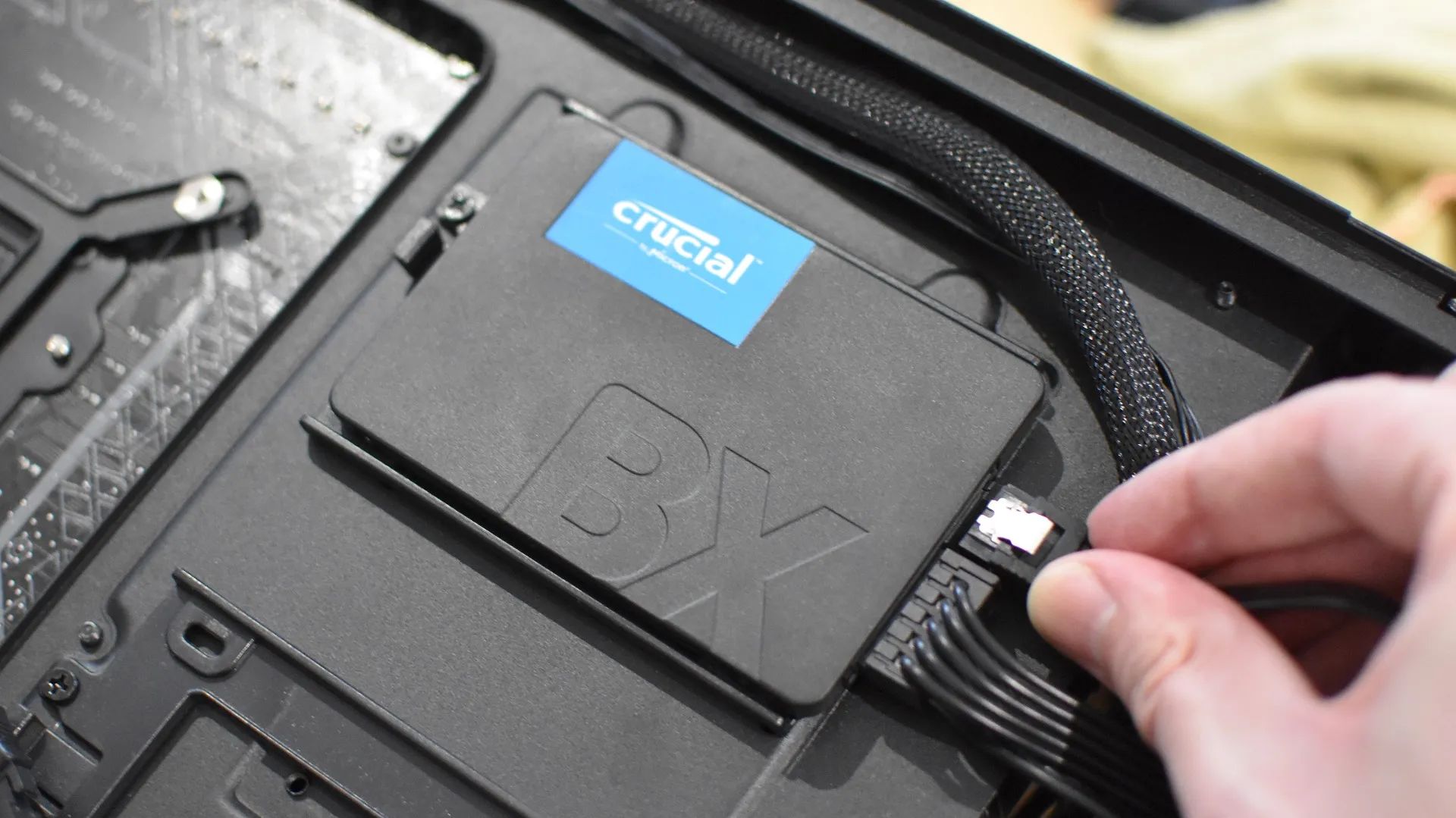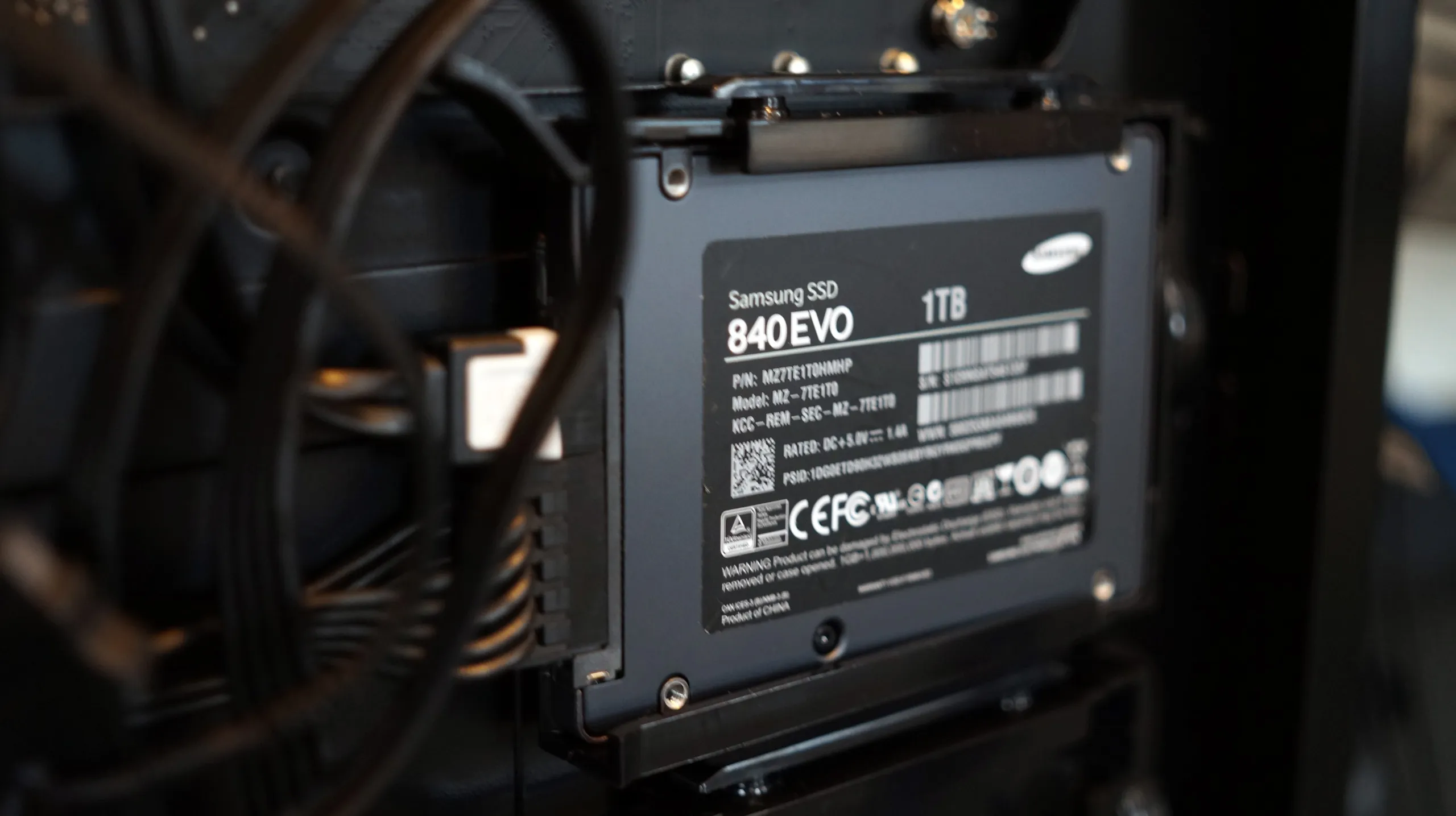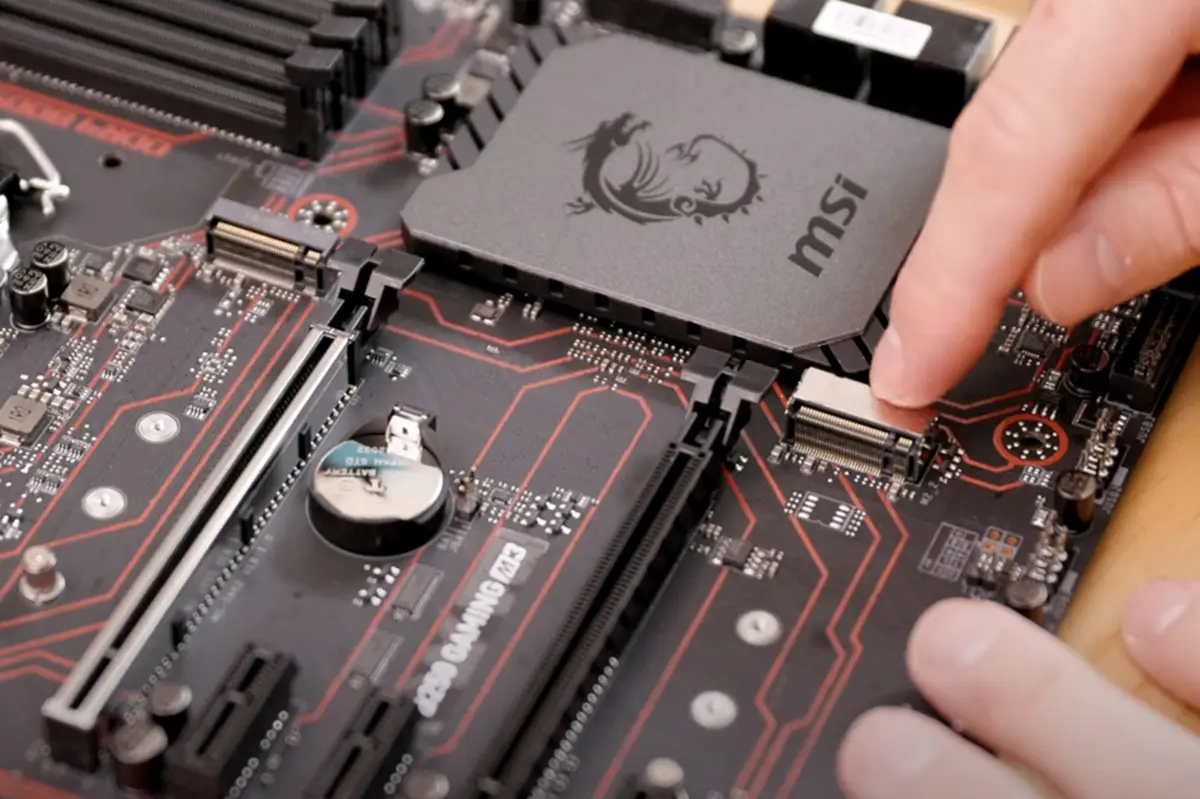Introduction
Welcome to the world of SSDs (Solid State Drives), the revolutionary storage devices that have transformed the way we use computers. If you are wondering how many SSDs a PC can have, you have come to the right place. In this article, we will explore the possibilities and limitations of adding multiple SSDs to your PC.
First, let’s understand what an SSD is. Unlike traditional hard disk drives (HDDs) that use spinning mechanical platters, SSDs utilize flash memory technology to store and retrieve data. This makes them faster, more reliable, and more durable than HDDs.
There are various benefits of using SSDs in your PC. They offer significantly faster data transfer speeds, allowing for quicker boot times, faster application launches, and speedy file transfers. SSDs are also more resistant to shock and vibration, making them ideal for portable devices. Additionally, they consume less power, which can lead to improved battery life in laptops and lower electricity bills for desktops.
Now, let’s address the question of how many SSDs a PC can have. The answer depends on several factors, including the available slots in your motherboard, the number of storage interfaces supported, and your specific requirements.
Modern motherboards typically come with multiple storage slots, allowing you to add multiple SSDs. However, it is essential to consider the storage interfaces supported by your motherboard. The two most common interfaces for SSDs are SATA (Serial ATA) and PCIe (Peripheral Component Interconnect Express).
In the following sections, we will discuss the factors to consider when adding multiple SSDs to your PC and explore the differences between SATA and PCIe interfaces. We will also delve into RAID configurations and help you choose the right SSDs for your needs. Finally, we will provide step-by-step instructions on how to add multiple SSDs to your PC.
So, if you are ready to take your PC’s storage capabilities to the next level, let’s dive in and explore how you can increase your storage capacity with multiple SSDs!
What is an SSD?
An SSD, or Solid State Drive, is a type of storage device that has become increasingly popular in the world of computing. Unlike traditional hard disk drives (HDDs) that rely on spinning mechanical platters and read/write heads, SSDs use flash memory technology to store and retrieve data.
The flash memory in an SSD consists of multiple semiconductor chips that retain data even when the power is turned off. This makes SSDs faster, more reliable, and more durable than HDDs. When you access data from an SSD, there are no moving parts involved, resulting in significantly faster read and write speeds.
SSDs offer a wide range of benefits compared to HDDs. One of the most significant advantages is speed. Thanks to the absence of mechanical parts, an SSD can access data almost instantly, leading to faster boot times, quicker application launches, and shorter file transfer times. This speed boost greatly enhances the overall performance of your PC, making everything feel more responsive.
Another advantage of SSDs is their durability. Since there are no moving parts that can wear out over time, SSDs are less prone to mechanical failures. They are also more resistant to shock and vibration, making them ideal for use in laptops and portable devices.
In addition to speed and durability, SSDs are also energy-efficient. They consume less power compared to HDDs, making them a great choice for laptops where battery life is crucial. Lower power consumption also means reduced electricity bills for desktop users.
Furthermore, SSDs operate silently as there are no moving parts to generate noise. This enhances the overall user experience and ensures a quieter computing environment.
As the demand for faster and more reliable storage solutions continues to grow, SSDs have become the go-to choice for many users looking to upgrade their PCs. With their numerous benefits and increasing affordability, SSDs are now more accessible than ever.
In the next sections, we will delve deeper into the possibilities of having multiple SSDs in a PC. We will explore the factors to consider, such as storage interfaces and RAID configurations, to help you maximize the storage capacity and performance of your system.
So, now that you have a clear understanding of what an SSD is and the advantages it offers, let’s move on to exploring how many SSDs a PC can have.
Benefits of using SSDs
Using Solid State Drives (SSDs) as your primary storage solution offers a multitude of benefits that can significantly enhance your computing experience. Let’s take a closer look at some of the key advantages of using SSDs in your PC.
1. Improved Performance: One of the most significant benefits of SSDs is their impressive speed. Unlike traditional hard disk drives (HDDs) that rely on spinning platters and mechanical read/write heads, SSDs use flash memory technology to store and retrieve data. This allows for lightning-fast access to your files and applications, resulting in faster boot times, quicker software launches, and reduced loading times for games and multimedia content.
2. Enhanced Reliability: Unlike HDDs, which are prone to mechanical failures due to their moving parts, SSDs have no moving components. This inherent lack of mechanical elements makes SSDs more resistant to shocks, vibrations, and heat, ensuring greater reliability and longevity. This durability makes SSDs ideal for use in portable devices, as they can withstand the rigors of being carried around.
3. Energy Efficiency: SSDs consume significantly less power compared to HDDs. This means that not only will your PC benefit from improved performance, but it will also draw less energy from the power source. This reduced power consumption translates into longer battery life for laptops and decreased electricity bills for desktop users, making SSDs a greener and more cost-effective storage option.
4. Silent Operation: Since SSDs have no moving parts, they operate silently. This is in stark contrast to HDDs, which can produce noticeable noise from spinning platters and read/write heads. The absence of noise from SSDs provides a quieter computing environment, reducing distractions and enhancing overall user experience, especially for those who value a serene workspace or enjoy working in a quiet environment.
5. Compact and Lightweight: SSDs are compact in size and lightweight, making them ideal for slim and portable devices such as ultrabooks, laptops, and tablets. Their small form factor allows manufacturers to create sleeker and more lightweight devices without compromising on storage capacity or performance. This makes SSDs an excellent choice for users who prioritize mobility and want to carry their data with them wherever they go.
6. Faster Data Transfer: SSDs provide lightning-fast data transfer speeds, which can greatly benefit users who work with large files, such as video editors, graphic designers, and gamers. Whether it is copying files, transferring data between devices, or working with resource-intensive applications, SSDs help reduce waiting times, significantly improving productivity and workflow efficiency.
By harnessing the power of SSDs in your PC, you can unlock a whole new level of performance, reliability, and convenience. Whether you are a casual user looking for faster boot times or a professional demanding high-speed storage for demanding tasks, SSDs offer a range of benefits that can elevate your computing experience to new heights.
In the following sections, we will explore how many SSDs a PC can have and the factors you need to consider when adding multiple SSDs to your system. We will delve into storage interfaces, RAID configurations, and recommended steps to ensure a seamless integration of multiple SSDs into your PC.
So, without further ado, let’s continue our journey into the world of SSDs and discover the possibilities they hold for expanding the storage capacity and performance of your PC.
How many SSDs can a PC have?
The capacity for a PC to accommodate multiple SSDs depends on several factors, such as the motherboard’s available expansion slots and the number of storage interfaces it supports. In most cases, modern motherboards offer multiple storage slots, allowing you to add more than one SSD to your system.
When considering how many SSDs your PC can have, it is important to take into account the available storage interfaces. The two main interfaces used for SSDs are SATA (Serial ATA) and PCIe (Peripheral Component Interconnect Express).
SATA is the most common interface and is used by traditional HDDs as well. Most motherboards come equipped with multiple SATA ports, making it easy to add multiple SATA SSDs to your PC. However, it is important to note that SATA SSDs share the bandwidth of the SATA interface, which can limit their performance in terms of data transfer speeds.
On the other hand, PCIe provides a faster and more efficient storage interface for SSDs. PCIe SSDs utilize the high-speed PCI Express slots commonly found in motherboards. These SSDs offer significantly faster data transfer speeds compared to SATA SSDs. However, PCIe slots may be limited in number, and their availability will depend on the specific motherboard model.
The number of SSDs your PC can have can also be influenced by the form factor of your motherboard. Standard ATX motherboards typically offer more expansion slots and, therefore, can accommodate multiple SSDs. However, smaller form factors such as Micro ATX or Mini ITX may have fewer expansion slots, limiting the number of SSDs that can be added.
Additionally, it is essential to consider factors such as power supply capacity and physical space inside the PC case. SSDs require power and data cables to be connected, so ensuring that your power supply has sufficient connectors is crucial. Moreover, SSDs need physical space inside the case for installation. Check the dimensions of the SSDs and available mounting points to ensure a proper fit.
In summary, the number of SSDs your PC can have depends on the motherboard’s available expansion slots, storage interfaces supported (such as SATA or PCIe), form factor, power supply capacity, and physical space inside the case. It is recommended to consult your motherboard’s specifications and guidelines to determine the maximum number of SSDs your PC can accommodate.
In the next sections, we will explore the factors to consider when adding multiple SSDs to your PC, including storage interfaces, RAID configurations, and steps to successfully integrate multiple SSDs into your system.
So, if you are considering expanding the storage capacity of your PC with multiple SSDs, keep reading to discover how you can effectively harness the power of these storage devices!
Factors to consider when adding multiple SSDs to a PC
When planning to add multiple SSDs to your PC, there are several important factors to consider. These factors will help ensure compatibility, optimal performance, and a seamless integration of the SSDs into your system. Let’s explore these factors in detail:
1. Storage Interfaces: The first factor to consider is the storage interfaces supported by your motherboard. As mentioned earlier, the two main interfaces for SSDs are SATA (Serial ATA) and PCIe (Peripheral Component Interconnect Express). Check the specifications of your motherboard to understand the number of SATA ports available and the type of PCIe slots (PCIe 3.0 or PCIe 4.0) that can support SSDs. This will determine the type and number of SSDs you can add.
2. Available Expansion Slots: Take into account the number of available expansion slots in your motherboard. Standard ATX motherboards typically offer more slots, allowing for the accommodation of multiple SSDs. However, smaller form factors like Micro ATX or Mini ITX may have fewer slots, limiting the number of SSDs you can add. Ensure that your motherboard has the necessary slots or consider using PCIe expansion cards to increase the number of available slots.
3. Power Supply Capacity: SSDs require power through connectors, so it’s important to ensure that your power supply has sufficient connectors to accommodate the added SSDs. Check the power supply specifications and the number of available SATA power connectors or PCIe power connectors required by the SSDs you plan to install. A power supply with modular cables can provide flexibility in connecting multiple SSDs.
4. Storage Capacity and Usage: Determine your storage needs and how you plan to utilize the SSDs. Are you looking for additional storage space, or do you prefer a RAID configuration for improved performance and data redundancy? Consider the storage capacity of each SSD and whether you will use them individually or configure them in RAID arrays, such as RAID 0 or RAID 1, for increased performance or data protection, respectively.
5. Case and Space Constraints: Assess the physical space inside your PC case and ensure that it can accommodate the number of SSDs you plan to add. Check the mounting points and dimensions of the SSDs to confirm a proper fit. Additionally, consider cable management and airflow within the case to maintain optimal cooling for the SSDs and other components.
6. Budget: Finally, consider your budget when adding multiple SSDs to your PC. SSDs come in various price ranges based on storage capacity, speed, and brand. Evaluate your requirements and allocate an appropriate budget to ensure you choose SSDs that meet your needs without overspending.
By taking these factors into account, you can make informed decisions when adding multiple SSDs to your PC. This will ensure compatibility, optimal performance, and a seamless integration of the SSDs into your system.
In the next sections, we will delve deeper into storage interfaces and discuss the differences between SATA and PCIe. We will also explore RAID configurations and help you choose the right SSDs for your PC. Let’s continue our journey into maximizing your PC’s storage potential!
Understanding storage interfaces and limitations
When adding multiple SSDs to your PC, it is essential to have a good understanding of different storage interfaces and their limitations. The two main interfaces used for SSDs are SATA (Serial ATA) and PCIe (Peripheral Component Interconnect Express).
SATA: SATA is the most common interface used for SSDs and HDDs alike. It provides a reliable and cost-effective solution for connecting storage devices to the motherboard. SATA SSDs typically come in two versions: SATA II (3Gbps) and SATA III (6Gbps). SATA III offers faster data transfer speeds compared to SATA II, so it is generally recommended for maximizing SSD performance.
However, it is important to note that SATA interfaces have limitations when it comes to SSD performance. The theoretical maximum speed of SATA III is around 600MB/s, which means that even the fastest SSDs may not fully utilize the interface’s potential. As a result, adding multiple SSDs to the same SATA interface can potentially saturate the bandwidth and limit the overall performance of the SSDs.
PCIe: PCIe is a high-speed storage interface that offers significantly faster data transfer speeds compared to SATA. It utilizes the PCI Express slots found on motherboards and provides greater bandwidth for SSDs. PCIe SSDs can offer sequential read and write speeds of several gigabytes per second, making them a preferred choice for users seeking top-tier performance.
The performance of PCIe SSDs depends on the generation of the PCIe interface and the number of available lanes. The latest PCIe 4.0 interface provides the highest bandwidth, followed by PCIe 3.0. PCIe SSDs are available in various form factors, including M.2 and add-in cards (AIC), allowing for flexible installation options.
It is important to check your motherboard specifications to determine the number of available PCIe slots and their generation. If you plan to add multiple PCIe SSDs, consider the number of available lanes for each slot, as using multiple SSDs might lead to a reduction in the number of lanes available per SSD, impacting their performance.
Limitations: It is crucial to acknowledge that storage interfaces have their limitations. While SATA provides a reliable and cost-effective solution for SSDs, it may not offer the highest performance speeds. On the other hand, PCIe offers faster speeds but can have limitations depending on the number of available lanes and the specific PCIe generation supported by the motherboard.
Considering these limitations, it is vital to align your expectations and requirements with the capabilities of the storage interfaces of your motherboard. Depending on your budget and the level of performance you desire, you can choose the most suitable storage interface for your multiple SSDs.
In the following sections, we will discuss RAID configurations for multiple SSDs and guide you in choosing the right SSDs for your PC. Let’s unravel the possibilities and make informed decisions to maximize the storage performance of your PC!
SATA vs. PCIe: Which one is better for multiple SSDs?
When deciding between SATA (Serial ATA) and PCIe (Peripheral Component Interconnect Express) for multiple SSDs in your PC, several factors need to be considered. Both interfaces offer advantages and limitations, and the choice ultimately depends on your specific needs and requirements.
SATA: SATA is the more commonly found and widely supported interface for SSDs. It provides a cost-effective and reliable solution for connecting storage devices to the motherboard. SATA SSDs are available in various capacities and offer respectable performance levels. However, it is important to note that SATA interfaces have limitations when it comes to maximum data transfer speeds.
When adding multiple SATA SSDs to your PC, they will share the bandwidth of the SATA interface. This means that the overall performance may be limited, potentially saturating the interface and decreasing the speed of each SSD. If you require high-performance storage and plan to use multiple SSDs simultaneously, SATA may not be the most ideal choice.
PCIe: PCIe offers a significant performance advantage over SATA, making it an attractive option for users seeking top-tier speed. PCIe SSDs operate over the high-speed PCI Express slots found on motherboards. They can deliver much faster data transfer speeds, especially when utilizing PCIe 3.0 or PCIe 4.0 interface generations.
When it comes to multiple SSDs, PCIe offers more flexibility and bandwidth. M.2 PCIe SSDs, for example, are compact, space-saving, and can be directly installed on the motherboard. They generally provide better performance when compared to SATA SSDs, even when multiple drives are used. However, it is important to check the number of available PCIe lanes on your motherboard as using multiple SSDs might reduce the number of lanes available to each drive, impacting their performance.
Another advantage of PCIe is the availability of RAID configurations for SSDs. RAID (Redundant Array of Independent Disks) allows you to combine multiple SSDs into an array, enhancing performance, data protection, or a combination of both. PCIe interfaces provide more RAID options and flexibility, allowing for greater customization based on your specific needs.
Keep in mind that PCIe SSDs are generally pricier than SATA SSDs, and not all motherboards support PCIe SSDs or provide enough slots for multiple drives. Checking your motherboard’s specifications and available slots is crucial in determining the feasibility of using multiple PCIe SSDs.
In summary, if you require high-performance storage and are planning to use multiple SSDs simultaneously, PCIe is the better choice. It offers faster data transfer speeds, better scalability, and more RAID configuration options. However, if cost-effectiveness and compatibility with a wide range of motherboards are important to you, SATA SSDs could still provide satisfactory performance.
Consider your budget, performance requirements, motherboard compatibility, and the number of available slots when deciding between SATA and PCIe for multiple SSDs. By analyzing these factors, you can make an informed decision to maximize the storage capabilities and performance of your PC.
In the next sections, we will discuss RAID configurations for multiple SSDs and guide you in choosing the right SSDs for your PC. Let’s continue exploring the possibilities and making informed decisions to optimize your PC’s storage potential!
RAID configurations for multiple SSDs
RAID (Redundant Array of Independent Disks) configurations offer a powerful solution for maximizing performance and data protection when using multiple SSDs in your PC. RAID allows you to combine multiple drives into an array, offering improved speed, fault tolerance, or a combination of both. Let’s explore some commonly used RAID configurations for multiple SSDs:
RAID 0 (Striping): RAID 0 distributes data across multiple SSDs, increasing read and write speeds. This configuration improves overall performance and is ideal for tasks that require fast data access, such as video editing or gaming. However, it is important to note that RAID 0 does not provide data redundancy. If one drive fails, all data on the array will be lost. Therefore, RAID 0 is not recommended if data protection is a priority.
RAID 1 (Mirroring): RAID 1 creates an exact copy, or mirror, of your data across multiple SSDs. This configuration provides redundancy, ensuring that if one drive fails, your data remains intact on the other drive(s). While RAID 1 improves data protection, it does not offer a performance boost like RAID 0. However, if data integrity and reliability are essential, RAID 1 is an excellent choice.
RAID 5 (Striping with Parity): RAID 5 stripes data across multiple SSDs, similar to RAID 0. However, it also incorporates parity information, which allows for data recovery in case of a single drive failure. This configuration offers a good balance between performance and data protection. RAID 5 requires a minimum of three drives, and it provides both increased speed and fault tolerance. However, when using RAID 5 with SSDs, it is important to consider the impact on performance, as SSDs have limited endurance for write operations due to their NAND flash memory technology.
RAID 10 (Striping and Mirroring): RAID 10 combines the features of RAID 0 and RAID 1. It stripes data across multiple SSDs for improved performance and mirroring for data redundancy. RAID 10 requires a minimum of four drives and provides both speed and fault tolerance. This configuration is often considered the best choice for both performance and data protection, although it does result in higher storage costs due to the need for additional drives.
When choosing a RAID configuration, it is crucial to consider your specific needs. RAID 0 offers increased performance, but with no data redundancy. RAID 1 provides data redundancy, but without a performance boost. RAID 5 strikes a balance between performance and data protection, while RAID 10 offers both speed and fault tolerance, but at a higher cost.
It is also important to note that implementing RAID configurations may require support from your motherboard’s chipset or dedicated RAID controller. Consult your motherboard’s documentation or the manufacturer’s website to ensure that your motherboard supports the desired RAID configuration.
Remember to backup your data regularly, as RAID configurations are not a substitute for proper data backup practices. RAID can protect against drive failures, but it cannot prevent data loss from other potential issues such as file corruption, viruses, or accidental deletion.
In the next section, we will guide you in choosing the right SSDs for your PC, considering factors such as storage capacity, performance, and budget. Let’s continue our exploration of optimizing your PC’s storage capabilities!
Choosing the right SSDs for your PC
When selecting SSDs for your PC, several factors need to be considered to ensure the best performance, storage capacity, and overall compatibility. Let’s explore these factors to help you make an informed decision:
Storage Capacity: Determine your storage needs based on how much data you plan to store on your SSDs. SSDs are available in various capacities, ranging from smaller options like 250GB or 500GB up to larger capacities like 1TB, 2TB, or even higher. Consider your usage requirements, such as gaming, multimedia editing, or professional work, to determine the appropriate storage capacity.
Performance: SSDs vary in terms of performance, particularly in read and write speeds. Look for SSDs with faster sequential read and write speeds if you require high-performance storage. Pay attention to random read/write speeds as well, as this can affect tasks involving small files or multitasking. Consider PCIe SSDs for even faster speeds, especially if your motherboard supports PCIe 3.0 or PCIe 4.0 interfaces.
Form Factor: SSDs come in different form factors, the most common being 2.5-inch SATA drives and M.2 drives. Determine which form factor is compatible with your motherboard and PC case. If space is limited, M.2 SSDs offer a more compact and convenient solution as they can be directly installed on the motherboard without the need for cables.
Budget: Set a budget based on your requirements. SSD prices can vary depending on the brand, capacity, and performance. Consider the balance between cost and performance to choose an SSD that meets your needs without overspending.
Reliability: Consider the reliability and endurance of the SSDs you are considering. Look for brands known for their reliability and check the warranty period offered. Pay attention to the endurance rating, represented by the Total Bytes Written (TBW), which indicates how much data can be written to the SSD over its lifespan. This is especially important if you plan to perform frequent write operations or use the SSDs in demanding applications.
Compatibility: Ensure compatibility with your motherboard and system. Check the specifications and requirements of your motherboard to ensure it supports the storage interface (SATA or PCIe) and form factor (2.5-inch or M.2) of the SSDs you plan to install. Additionally, ensure that you have sufficient available slots and power connectors to accommodate the SSDs.
Brand Reputation: Consider purchasing SSDs from reputable brands known for their quality and performance. Look for customer reviews, ratings, and expert recommendations to gain insight into the reliability and performance of different SSD models.
By considering these factors, you can select the right SSDs for your PC. Determine the storage capacity, performance level, budget, and compatibility requirements that align with your specific needs. Taking the time to research and choose the appropriate SSDs will ensure optimal performance and satisfaction with your PC’s storage solution.
In the next section, we will guide you through the steps to add multiple SSDs to your PC, ensuring a seamless integration and utilization of the added storage capacity. Let’s continue our journey into expanding your PC’s storage capabilities!
Steps to add multiple SSDs to your PC
If you have decided to expand your PC’s storage capacity by adding multiple SSDs, here are the steps to help you seamlessly integrate the new SSDs into your system:
Step 1: Check your motherboard and power supply: Ensure that your motherboard has available storage slots and supports the desired storage interface (SATA or PCIe) for the SSDs you plan to install. Additionally, confirm that your power supply has sufficient connectors for powering the additional SSDs.
Step 2: Gather the necessary tools and equipment: Make sure you have the required tools such as a screwdriver and any necessary cables for connecting the SSDs. Refer to the motherboard and SSDs’ manuals to determine the specific cables needed.
Step 3: Prepare your PC: Shutdown your PC and disconnect the power cable. Take necessary precautions by grounding yourself to avoid any static discharge that could damage the components while working inside the PC case.
Step 4: Choose the appropriate installation method: Depending on the SSD form factor, decide whether you will install it in a 2.5-inch drive bay or an M.2 slot. For 2.5-inch SSDs, you may need to mount them in the available drive bays using screws. M.2 SSDs are usually inserted into the dedicated M.2 slots on the motherboard.
Step 5: Connect the SSDs: Connect the data cable (SATA or PCIe, depending on the SSD) from the SSD to the corresponding interface on the motherboard. For SATA SSDs, connect the power cables from the power supply to the SSDs. If using M.2 SSDs, be sure to secure them with the appropriate screw if necessary.
Step 6: Secure the SSDs: If installing 2.5-inch SSDs, attach them securely to the drive bays using screws. Ensure that the SSDs are properly aligned and fastened to prevent any movement or damage during operation.
Step 7: Close the PC case: After confirming that all the SSDs are securely connected and fastened, close the PC case and secure it with screws.
Step 8: Power on your PC: Reconnect the power cable and start your PC. Enter the BIOS settings to ensure that the newly installed SSDs are detected by the system.
Step 9: Format and partition the SSDs: If the SSDs are new or have not been used before, you may need to format and partition them to make them usable. This can typically be done using disk management tools within the operating system or through dedicated software provided by the SSD manufacturer.
Step 10: Verify and configure RAID (if desired): If you plan to configure the SSDs in a RAID array, consult your motherboard’s manual or the manufacturer’s instructions for setting up and configuring the desired RAID level. Follow the provided steps to create the RAID array and initialize it within the operating system.
By following these steps, you can successfully add multiple SSDs to your PC and expand your storage capacity. It is important to refer to the specific instructions provided with your motherboard and SSDs for any additional steps or considerations that may be needed for your particular hardware configuration.
Now that you have added multiple SSDs to your PC, you can enjoy increased storage capacity, improved performance, and enhanced productivity. Take the time to optimize your storage setup according to your needs, whether it involves configuring RAID, organizing your data, or maximizing the benefits of the added SSDs through proper software and settings.
In the next section, we will provide a brief summary and conclude our exploration of adding multiple SSDs to your PC. Let’s recap the key insights and celebrate your expanded storage capabilities!
Conclusion
Expanding your PC’s storage capacity by adding multiple SSDs can greatly enhance your computing experience. SSDs offer faster data transfer speeds, improved reliability, energy efficiency, and a compact form factor. By considering factors such as storage interfaces, RAID configurations, and choosing the right SSDs, you can optimize your PC’s storage capabilities to suit your specific needs.
When considering how many SSDs a PC can have, it is crucial to evaluate your motherboard’s available expansion slots and storage interface support, along with power supply capacity and physical space inside the PC case. SATA and PCIe are the primary storage interfaces, each with its own advantages and limitations. SATA is widely supported but has lower speed capabilities, while PCIe provides faster speeds, especially when using PCIe 3.0 or 4.0 interfaces.
RAID configurations can further enhance the performance and data protection of multiple SSDs. RAID 0 offers improved speed, but no data redundancy, while RAID 1 provides data mirroring for increased reliability. RAID 5 combines striping and parity for both performance and fault tolerance, while RAID 10 combines striping and mirroring for optimal speed and redundancy.
Choosing the right SSDs involves considering factors such as storage capacity, performance, form factor, budget, reliability, compatibility, and brand reputation. Understanding these factors will help you make an informed decision based on your specific requirements and budget constraints.
Adding multiple SSDs to your PC requires careful consideration and adherence to the necessary steps. Checking motherboard compatibility, preparing the required tools, connecting the SSDs properly, and configuring the SSDs in RAID (if desired) are crucial for a successful integration.
With the increased storage capacity and performance of multiple SSDs in your PC, you can enjoy faster boot times, quicker application launches, shorter file transfer times, and smoother multitasking. The improved reliability and energy efficiency of SSDs also contribute to a better overall computing experience.
Remember to regularly backup your data, as no storage solution is immune to potential data loss. RAID configurations can provide some level of fault tolerance, but they should not replace proper backup practices.
In summary, adding multiple SSDs to your PC requires careful planning, consideration of hardware compatibility, and a clear understanding of your storage needs. By following the steps outlined and considering the factors discussed in this article, you can maximize your PC’s storage capabilities and enjoy the benefits that SSDs bring to your computing experience.







